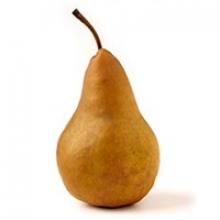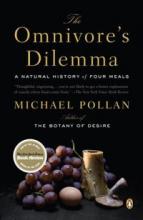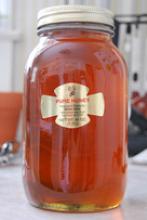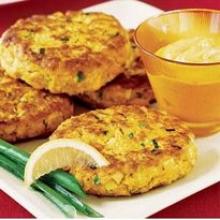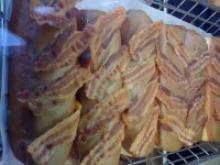Pears!
Admittedly a big part of this problem is that my preferred pear ripening spot happens to be within arm's reach of my desk. You can just guess how THAT works out.
There are several different varieties of pears which are on the market now, or will be coming to the market soon. Pears, less popular than apples or oranges, are not quite yet subject to the kind of year-round demand that makes for poor produce. With some exceptions, pears are still a relatively seasonal fruit, which means when you see them in the store, you have to snap them right up!
Seckel pears are the most delicious pears in existence. Okay, that's just my personal biased opinion. They are also called "sugar pears" and "honey pears," and with good reason. Seckel pears tend to be small, and greenish yellow with a red blush. Seckel pears are considered too smooshy (that's the technical term, "smooshy") to use in cooking, but they are fantastic eaten out of hand.
Bosc pears are as delicious as they are ugly. A perfectly ripe bosc pear is an unappealing, "paper bag" shade of brown. Boscs are very tall and thin compared to other pears, and one of the crispest variety. I think of Bosc pears as being quintessentially French, but I have no idea where I got that impression.
Anjou or D'Anjou pears, which come in either red or green. D'Anjou pears are tart, with a flesh commonly described as "creamy." This is the classic green pear, which is often available year round at the grocery store. Personally, I am skeptical of D'Anjou pears for this reason, but that's probably an unreasonable prejudice.
Bartlett pears are squat and turn from green to yellow when ripe. I don't get very excited about eating Bartlett pears plain, but they hold up well to canning and cooking.
Pears are best purchased under-ripe, then ripened at home. They are one of the few fruits which are never left on the tree to ripen, even by home gardeners. The best way to ripen a pear is to set it in a brown paper bag. You can close the bag and include a ripe banana if you're in a big hurry - the ethylene gas given off by the banana will ripen the pear more quickly. Most pears are ripe when the stem end yields gently to pressure, although for some varieties you can rely on a color change to tell you when it's ready.
(Personally whenever I have done this, the pears ripened so quickly that they spoiled before I remembered to open the bag. In fact, I have an "out of sight, out of mind" problem with produce in general. I just leave my pears on the windowsill (beside my desk) and wait the extra few days for them to ripen on their own.)
